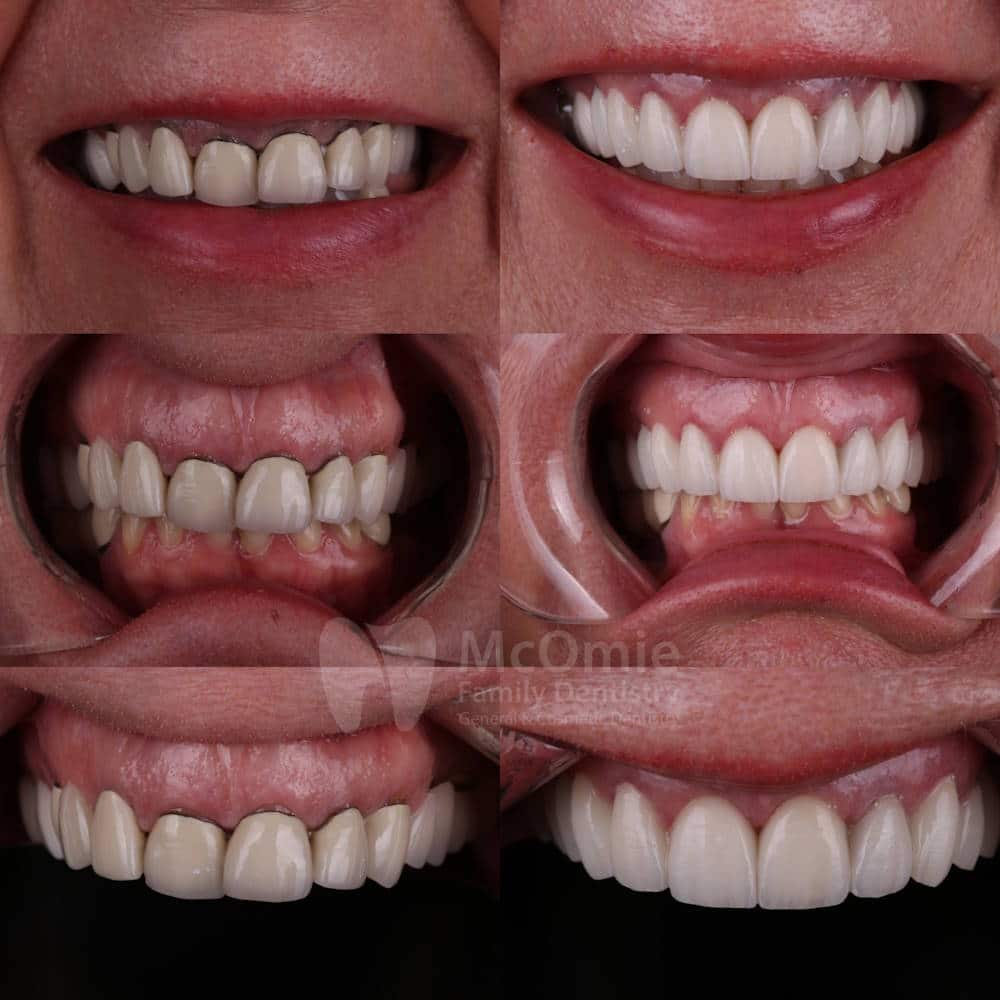
Dental bridge work is a restorative dental procedure that replaces one or more missing teeth with artificial teeth, which are supported by the adjacent teeth. The procedure involves placing crowns on the adjacent teeth and then attaching a bridge, which consists of the artificial teeth, to the crowns.
Dental bridge work can be used to improve the appearance of a smile, restore the ability to chew and speak properly, and prevent the remaining teeth from shifting out of place. It is a relatively common procedure that has been used for many years with a high success rate.
There are two main types of dental bridges: traditional bridges and cantilever bridges. Traditional bridges are the most common type and consist of a pontic (the artificial tooth) that is suspended between two crowns. Cantilever bridges are used when there is only one adjacent tooth to support the bridge. In this case, the pontic is attached to only one crown.
The process of getting a dental bridge typically involves several visits to the dentist. During the first visit, the dentist will prepare the adjacent teeth for the crowns and take impressions of the teeth. The impressions are used to create the crowns and the bridge. At the next visit, the dentist will place the crowns and the bridge on the teeth.
Dental bridge work is a safe and effective way to replace missing teeth. It can improve the appearance of a smile, restore the ability to chew and speak properly, and prevent the remaining teeth from shifting out of place.
FAQs about Dental Bridge Work
Dental bridge work is a common procedure that can improve your smile and oral health. Here are some frequently asked questions about dental bridge work:
Question 1: What are the benefits of getting a dental bridge?
Answer: Dental bridges can improve your smile, restore your ability to chew and speak properly, and prevent your remaining teeth from shifting out of place.
Question 2: What is the process of getting a dental bridge?
Answer: The process of getting a dental bridge typically involves several visits to the dentist. During the first visit, the dentist will prepare your teeth for the crowns and take impressions of your teeth. The impressions are used to create the crowns and the bridge. At the next visit, the dentist will place the crowns and the bridge on your teeth.
Question 3: How long do dental bridges last?
Answer: Dental bridges can last for many years with proper care. With good oral hygiene and regular dental checkups, your dental bridge can last for 10 years or more.
Question 4: How much do dental bridges cost?
Answer: The cost of a dental bridge can vary depending on the number of teeth being replaced and the materials used. Your dentist can provide you with a cost estimate during your consultation.
Question 5: Are there any risks associated with getting a dental bridge?
Answer: There are some risks associated with getting a dental bridge, such as damage to the adjacent teeth, gum disease, and nerve damage. However, these risks are rare when the procedure is performed by a qualified dentist.
Question 6: How can I care for my dental bridge?
Answer: You can care for your dental bridge by brushing and flossing your teeth regularly, avoiding hard foods, and seeing your dentist for regular checkups.
Summary: Dental bridge work is a safe and effective way to replace missing teeth. It can improve your smile, restore your ability to chew and speak properly, and prevent your remaining teeth from shifting out of place. If you are considering getting a dental bridge, be sure to talk to your dentist about the benefits and risks.
Transition to the next article section: If you are interested in learning more about dental bridge work, please continue reading the article below.
Tips for Dental Bridge Work
Dental bridge work can be a great way to improve your smile and oral health. Here are five tips to help you get the most out of your dental bridge:
Tip 1: Practice good oral hygiene. Brush and floss your teeth regularly to remove plaque and bacteria. This will help to keep your bridge clean and free of infection.
Tip 2: Avoid hard foods. Hard foods can damage your bridge. Avoid chewing on ice, hard candy, or other hard foods.
Tip 3: See your dentist regularly. See your dentist for regular checkups and cleanings. This will help to keep your bridge in good condition and prevent any problems from developing.
Tip 4: Be aware of the signs of problems. If you experience any pain, swelling, or other problems with your bridge, be sure to see your dentist right away.
Tip 5: Follow your dentist’s instructions. Your dentist will give you specific instructions on how to care for your bridge. Be sure to follow these instructions carefully.
Summary: By following these tips, you can help to ensure that your dental bridge lasts for many years to come.
Transition to the article’s conclusion: If you are considering getting a dental bridge, be sure to talk to your dentist about the benefits and risks. With proper care, a dental bridge can be a great way to improve your smile and oral health.
Conclusion
Dental bridge work is a safe and effective way to replace missing teeth and restore oral health. It is important to practice good oral hygiene, avoid hard foods, and see your dentist regularly to ensure that your dental bridge lasts for many years to come.
If you are considering getting a dental bridge, be sure to talk to your dentist about the benefits and risks. With proper care, a dental bridge can be a great way to improve your smile and oral health.



